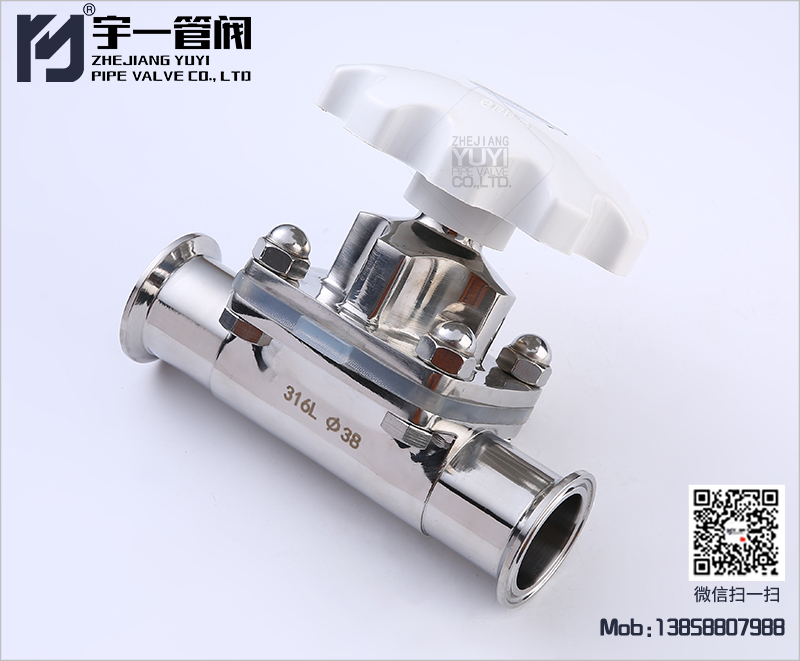The sanitary diaphragm valve is remotely controlled by a drive device or manually operated by a handle. There are three standard drive devices: normally closed and normally open. It has the advantages of simple structure, beautiful appearance, quick disassembly and assembly, flexible operation, small fluid resistance, safe and reliable use, etc.The sanitary diaphragm valve adopts the connection forms of slip-on flange connection, quick-release flange connection and welding connection. The welding connection is divided into welding type I connection (i.e. welding at both ends) and welding type II connection (i.e. welding at one end and inserting at the other end). It is suitable for the control of water, gas, oil and corrosive media in the chemical, petroleum, metallurgy, plumbing, food, medicine and other industries. It is remotely controlled by the drive unit or manually operated by the handle.

The sanitary diaphragm valve uses a rubber membrane with a valve stem directly pressed on the valve seat to cut off or connect the vacuum system. The diaphragm valve is particularly suitable for ultra-pure media or severely contaminated, very viscous liquids, gases, corrosive or inert media due to its structural design. When used in conjunction with control equipment, the diaphragm valve can replace other traditional control systems, especially for solid and easily contaminated inert media.
The sanitary valve adopts the clamp type, which has the advantages of simple structure, beautiful appearance, quick disassembly and assembly, rapid opening and closing, flexible operation, small fluid resistance, safe and reliable use, etc. All steel parts are made of acid-resistant stainless steel, and the sealing parts are made of food silicone rubber or polytetrafluoroethylene, which meets the food hygiene standards. It is widely used in many industries such as food, wine, beverage, dairy products, fine chemicals, pharmaceuticals, and bioengineering.



